Version Française disponible ici
Today I’m dealing with master planning. Well it’s a huge topic so I will focus on a specific one which gather 2 subjects: master planning and intercompany orders. Let’s talk about intercompany master planning.
To make it simple, intercompany master plan consists to run the net requirement on several legal entities from one of them, by choosing legal entities and master plans that you want to run and specify the scheduling and the iteration number we want to run. Let’s have a look through an example.
Scenario
I’m gonna use 3 different companies, and one manufactured item with only one component on his bill of material.
Here is the item :

Item ART-PF-1, composed by only one raw material ART-COMP-1, and sells to a final customer on USMF.
Item ART-PF-1 is manufactured on DEMF company. ART-COMP-1 is procured by company USP2 and deliver to USMF through a intercompany process.
In my example, USP2 is purchasing ART-COMP-1 with an external process.
To sum up this, I have 3 companies:
- Selling company USMF
- Final customer MissMichu
- Selled item ART-PF-1
- Manufactured company DEMF
- Master planning is run on this company
- ART-PF-1 is produced here
- Component ART-COMP-1 is needed, and procured from USP2
- Procurement company USP2
- External supplier is defined here to procure ART-COMP-1 for DEMF
The process is the following:
- The original SO is created for the final customer.
- Instantly the intercompany purchase order is created in DEMF.
- Intercompany net requirement is run in DEMF, by calling the master plans defined in DEMF, USP2, and USMF.
- One production order and one purchase order are generated on DEMF. In the same time, an intercompany sales order has been generated too on USP2.
- As there is no stock of ART-COMP-1 in USP2, a planned purchase order is generated in USP2, due to the run of net requirement in DEMF.

Setup required
Let’s focus on what is required to achieve this.
o USMF
From USMF, we first need to setup the final customer to be automatic for intercompany order creation.
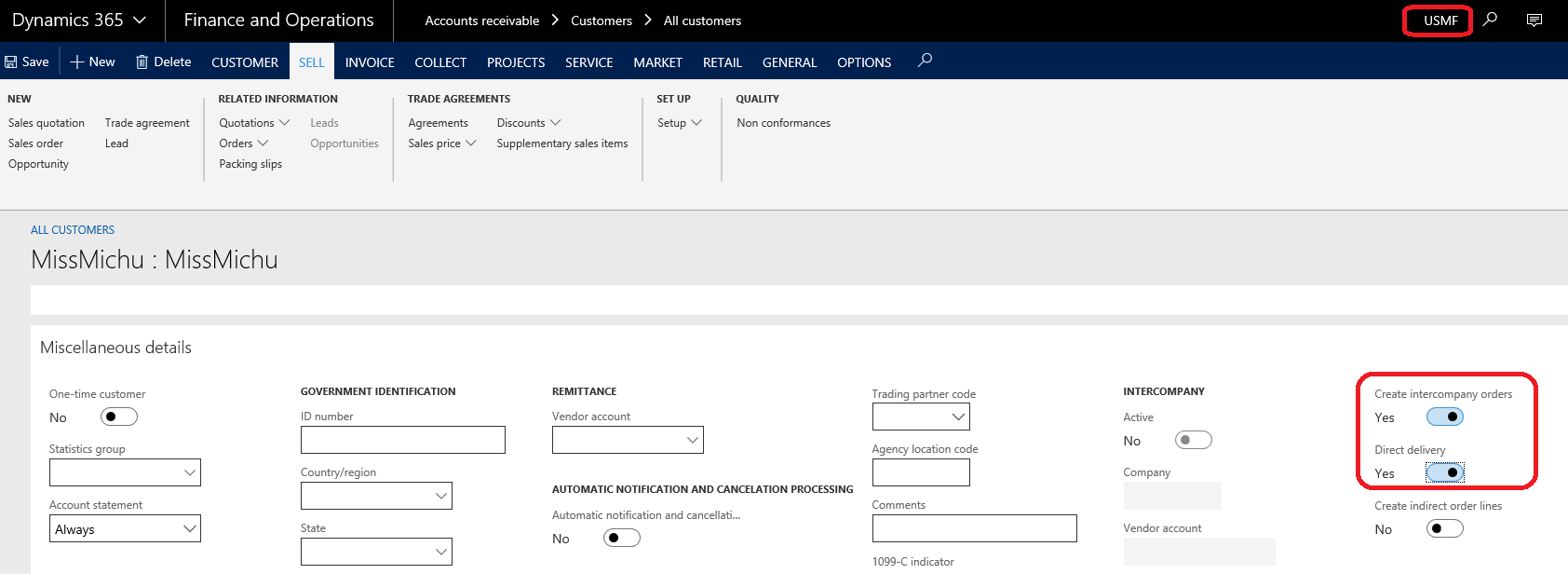
Then we need to create the intercompany relationships between USMF and DEMF. And tick the Active checkbox below (yes I know it’s not Active in the below screenshot but you need to active it believe me).
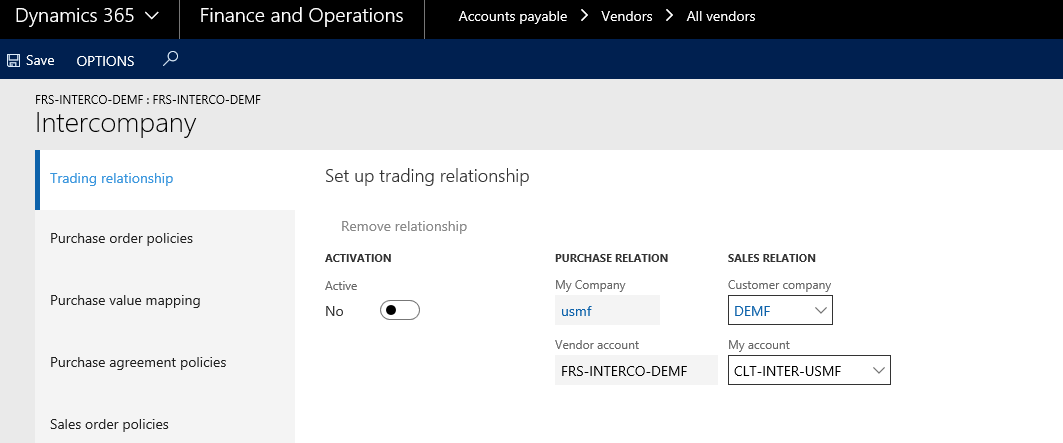
Then it’s time to release the ART-PF-1 item in USMF and DEMF. On the USMF item, we specify the default vendor in order to activate the automatic purchase order creation process.
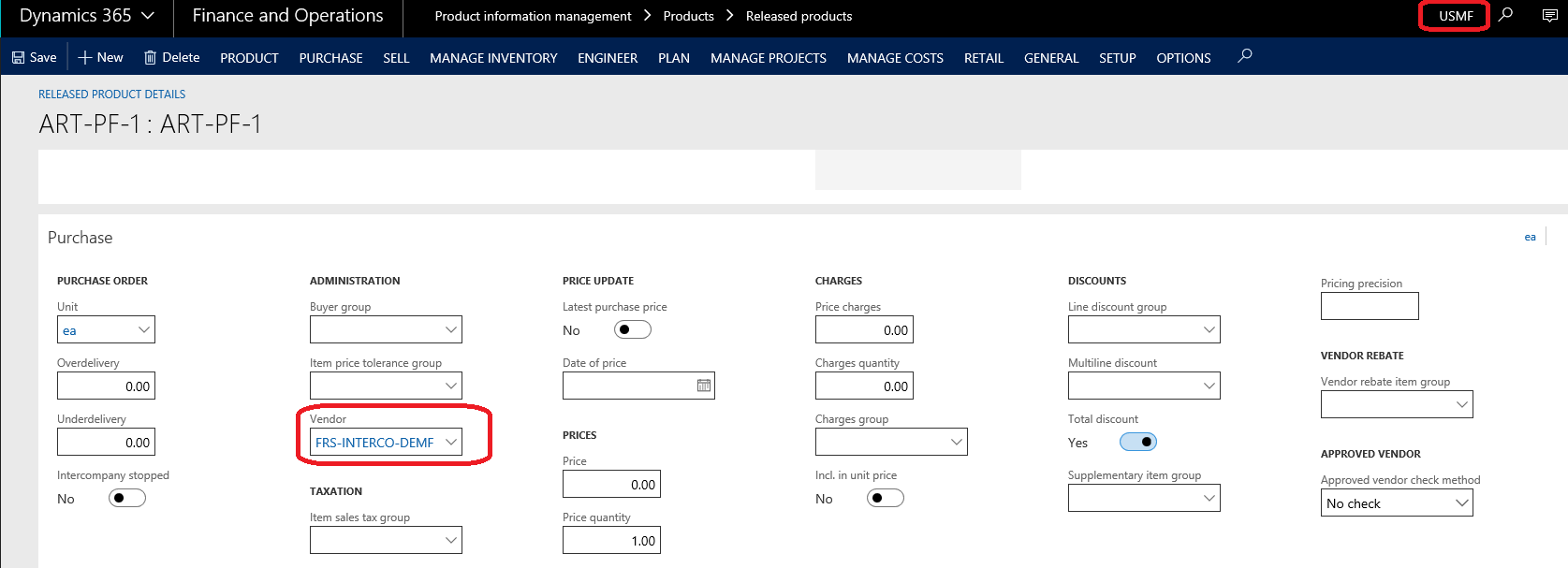
o DEMF
Here, I have the intercompany relationship to build with USMF. Then we need to setup ART-COMP-1 and create the bill of materials.
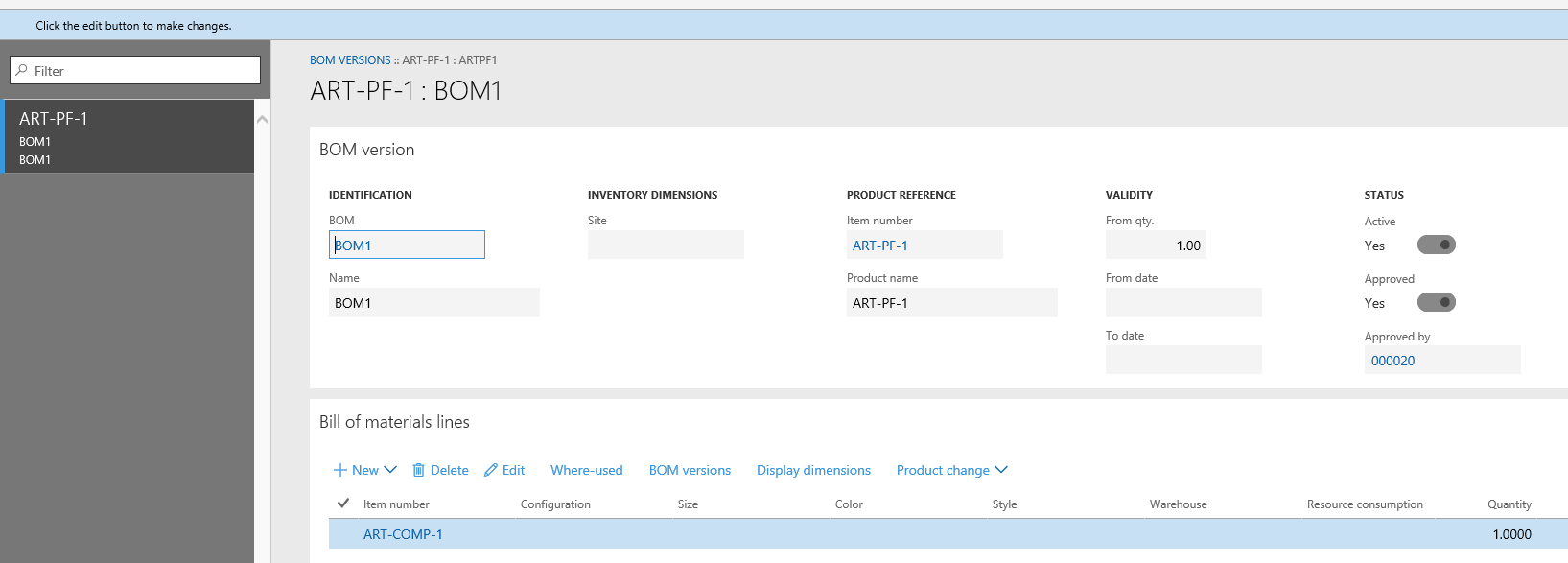
Then I have to define the intercompany relationship between DEMF and USP2 (and Active it here too).
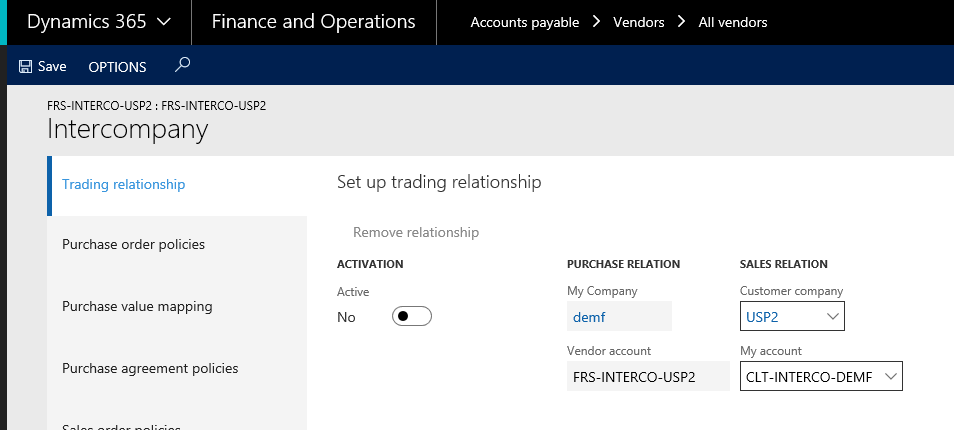
On the ART-COMP-1 item, I setup the same way for the default supplier (FRS-INTERCO-USP2).
Now I’m focusing on master plans. In each of 3 companies, default master plans are already setup. I’m going to use them.
In the DEMF master plan, I’m just checking the time fence is quite large to be able to have directly firmed order instead of planned.
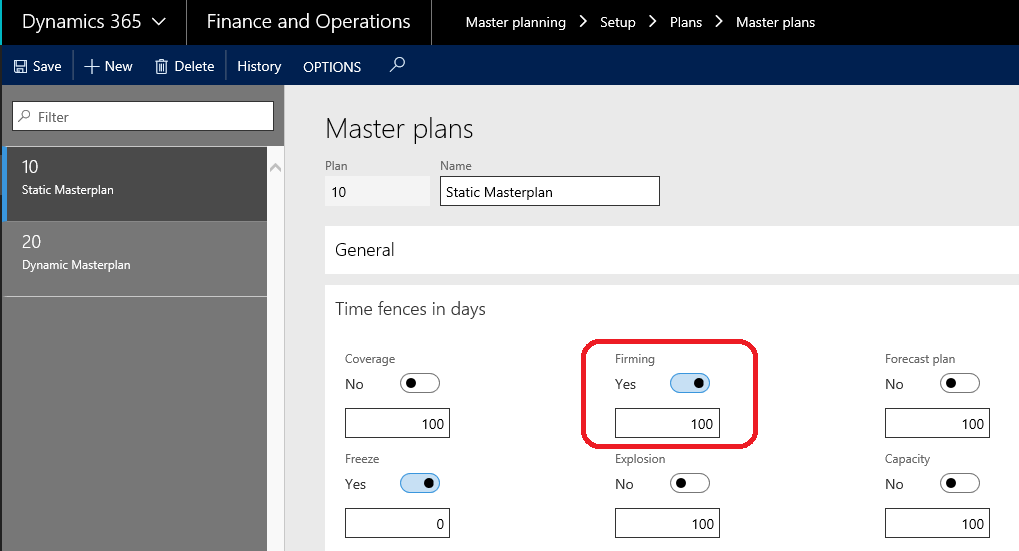
I create then an itercompany planning group and specify there which company will be in that group and which master plan on which scheduling sequence I want.

o USP2
On the UPS2 company, I only have released the ART-COMP-1 item and setup the intercompany relationship with DEMF.
Process
The process I will run is the following:
- Creation of a sales order on the MissMichu customer, adding the ART-PF-1
- On the focus change, the intercompany purchase order is created for FRS-INTERCO-USMF. This is due to:
- Customer MissMichu is setup to auto-create orders
- ART-PF-1 is setup with an intercompany default supplier
- The intercompany sales order is created on DEMF for CLT-INTER-USMF customer

I have received a pop-up notifying me the intercompany PO number 69 has been created, and so is the intercompany SO in DEMF
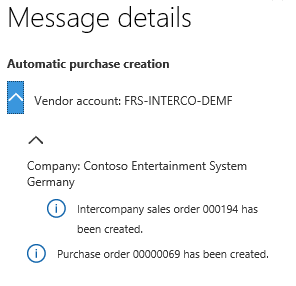
From USMF, I will
- Run the Master plan calculation (as a remainder, in my demo I have no stock of ART-PF-1 nor ART-COMP-1 anywhere)
- A firmed production order for ART-PF-1 on DEMF will be generated, and so will an intercompany purchase order on DEMF for ART-COMP-1
- An intercompany sales order will be also generated in USP2 in association with the previous intercompany purchase order.
- In DEMF, the confirmation is setup to be automatic so orders will be firmed instead of planned.
- The requirement on USP2 to fill the intercompany sales order of ART-COMP-1 is detected and consequently a planned purchase order will be generated.
- All this will be done with only one iteration of master planning calculation
I run the Master plan calculation now (Master planning > Master planning > Run > Intercompany master planning).
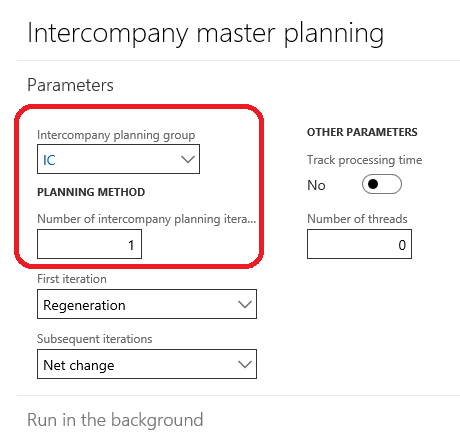
A firmed production order has been generated in DEMF.

A firmed purchase order has been created on DEMF.
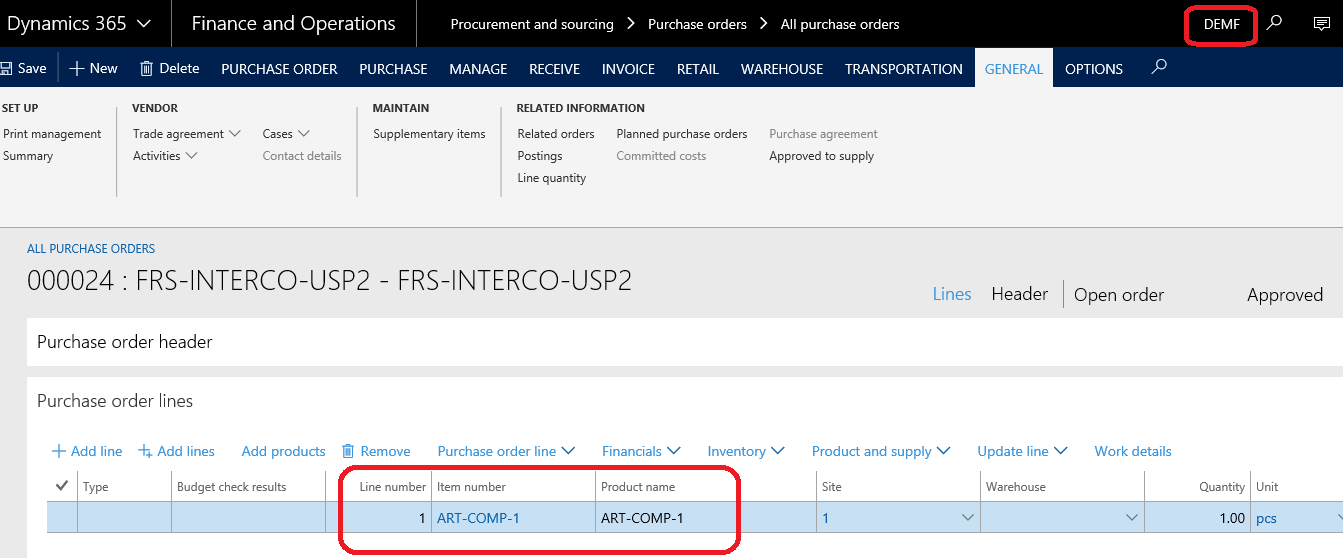
As expected with intercompany relationships, the linked sales order has been created on USP2.

Intercompany master planning calculation has generated in USP2 from DEMF a planned purchase order for the component ART-COMP-1.

As you have seen here, it’s not so complicated indeed to run an intercompany master planning. Pay attention to have planned orders automatically firmed in the DEMF company for generate USP2 orders.
If you want more
You can run the intercompany master planning in several iterations by upadting the parameter Number of intercompany iterations (Master planning > Master planning > Run > Intercompany master planning).
The purpose of running a master planning twice or more is when a new requirement has been created through the first run of the intercompany master planning, the second run will take that into account and generate a new planned order for this.
For our previous situation, let’s consider ART-COMP-1 is procured by intercompany relationships from USMF.

In that situation, the second run of the intercompany master planning will generate a planned purchase order in USMF for the ART-COMP-1, all other orders will have been generated in the first run.
That’s it !
Yohann ROLLAND


One comment